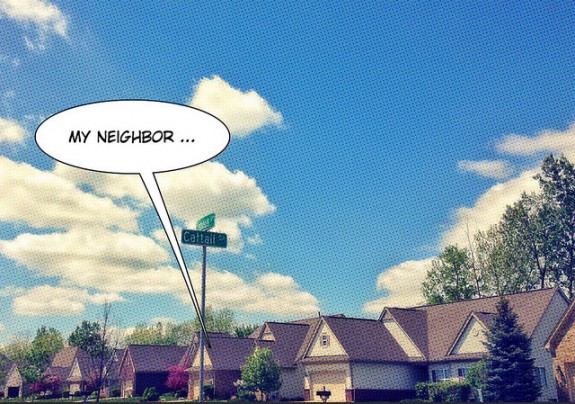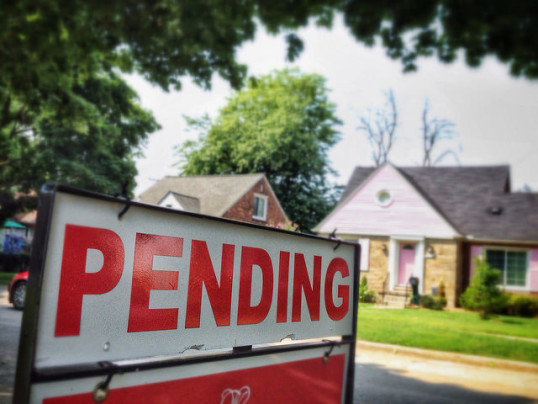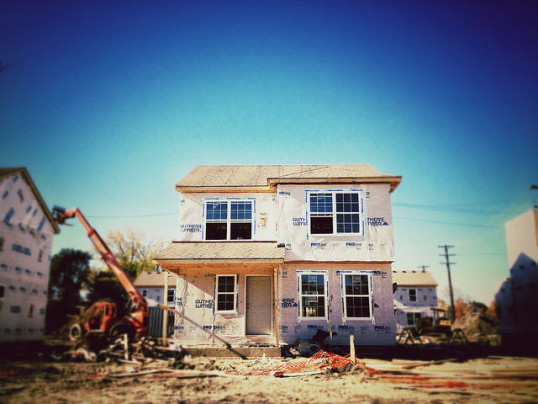Though the housing recovery has been slow at times and up-and-down at best, an emerging upward trend has an increasing number of local real-estate markets showing improvement. In fact, according to Freddie Mac’s Multi-Indicator Market Index – which measures the stability of the nation’s housing market – residential real estate hasn’t completely rebounded compared to its June 2008 all-time high but it has regained 22.6 percent since its low and is now 4 percent above last year’s level. The improvement is an indication that an increasing number of markets are seeing their fundamentals improve, including home purchase applications, payment-to-income ratios, proportion of on-time mortgage payments, and the local employment picture. Frank Nothaft, Freddie Mac’s chief economist, said there’s been a pick-up in the number of states and individual cities improving at the local level based on their three-month trend. In addition, this positive trend has extended beyond the larger markets and is now beginning to boost smaller metros. In all, eight additional metro and state housing markets were added to the list of areas showing positive momentum from the month before. More here.
Archive for October 2014
Mortgage Rates Rise After Weeks Of Decline
After declining for four-straight weeks, average mortgage rates rose last week, according to the Mortgage Bankers Association’s Weekly Applications Survey. The results show rates increased on 30-year fixed-rate mortgages with both conforming and jumbo balances as well as loans backed by the Federal Housing Administration. Interest rates on 15-year fixed-rate loans were unchanged from the week before. The rate increase led to a drop in mortgage application volume, with demand for both refinance and purchase loans falling from the week before. In fact, the Market Composite Index – which measures total loan application demand – declined 6.6 percent. Mark Fratantoni, MBA’s chief economist, said some of the recent volatility in demand has been due to up-and-down refinance activity on jumbo loans. Refinance activity surged when rates fell to a 16-month low but slowed significantly once they began to climb again. The MBA’s weekly survey has been conducted since 1990 and covers 75 percent of all retail residential mortgage applications. More here.
What Americans Say About Their Neighbors
The American Housing Survey is an annual look at the U.S. housing stock released by the Department of Housing and Urban Development and the U.S. Census Bureau. In addition to information about the types of houses and neighborhoods Americans live in, the survey also compiles data on housing costs, neighborhood social life, use of public transportation, and disaster preparation. Among the highlights of this year’s survey, a majority of Americans say they get along with their neighbors and 82.4 percent report talking with their neighbor within the past month. Nearly half of participants also said they are very willing to help their neighbors. In addition, the survey found that most American homes have pets, with 15.2 million pet-owning households across the country. Also, 40 percent of households reported walking to nearby destinations, such as entertainment, grocery stores, shopping centers, work, school, and places of worship. Among housing units, 65 percent are owner occupied and 35 percent are occupied by renters. The median size of all single-family homes was 1,800 square feet. More here.
Favorable Conditions Bring Out The Buyers
With mortgage rates falling and price increases slowing, prospective home buyers are seeing more favorable conditions than they did earlier in the year. The trend has led to increasing optimism about the housing market’s future and also improving sales numbers. In fact, the National Association of Realtors’ Pending Home Sales Index – which measures the number of contract signings each month – rose above year-before levels for the first time in 11 months, according to the most recent release. The index is now at its second-highest level in a year. Lawrence Yun, NAR’s chief economist, said the number of homes available for sale is on the rise and it’s preventing home prices from increasing as quickly as they were earlier this year. That means, affordability conditions should continue to improve as long inventory sustains its gains and mortgage rates stay low. Despite the overall improvement, however, regional results varied, with the Northeast and South showing increases while the West and Midwest decreased slightly. Pending-home sales are a good indicator of future sales of previously owned homes. More here.
September New Home Sales at 6-Year High
Sales of newly built single-family homes rose just 0.2 percent in September, according to estimates from the U.S. Census Bureau and the Department of Housing and Urban Development. But though virtually unchanged from August, new-home sales still registered their best month since July 2008 and were up 17 percent over last year’s estimates. The improvement suggests the housing market is slowly retuning to normal, despite the volatility of recent monthly real-estate data. Also in the release, the median sales price of new houses sold during the month was $259,000; the average price was $313,200. At the end of the month, there were an estimated 207,000 new homes for sale nationally. That represents a supply of 5.3-months at the current sales pace. A six-month supply is considered a healthy and balanced market. More here.
Housing On Track To Make Next Year Best Since 2007
Fannie Mae’s Economic & Strategic Research Group releases a monthly outlook forecasting upcoming economic and housing market growth. In their most recent release, the group says the U.S. economy has been strengthening through the second half of the year and is poised to continue its gains in 2015. This, along with several buyer-friendly trends in residential real estate, has the group predicting next year will be the best year for total home sales since 2007 – before the financial crisis and recession. Doug Duncan, Fannie Mae’s chief economist, said they are cautiously optimistic that ongoing job market improvements, low mortgage rates, rising for-sale inventory, and some easing of lending standards should boost home sales by roughly 5 percent next year. Still, Duncan warns that it will not be the breakout year some analysts are expecting. Instead, he expects the housing market to continue along its steady, upward grind. Fannie Mae is forecasting overall home sales to end this year weaker than 2013, mostly due to 2014’s slow start. More here.
Mortgage Rates Continue To Fall
According to the Mortgage Bankers Association’s Weekly Applications Survey, average mortgage rates fell again last week, with rates dropping on 30-year fixed-rate mortgages with both conforming and jumbo balances, loans backed by the Federal Housing Administration, and 15-year fixed-rate loans. With rates down over the past four weeks, refinance activity has surged. In fact, last week’s results show a 23 percent increase from the week before, which brought the refinance share of total mortgage activity up to 65 percent. Mike Fratantoni, MBA’s chief economist, said refinance application volume reached the highest level since November of last year and the average loan balance on refinance applications increased to $306,400, which is the highest level in survey history. Unfortunately, demand for loans to buy homes hasn’t seen the same improvement. The seasonally adjusted Purchase Index decreased 5 percent last week from the week before and is now 9 percent lower than the same week a year ago. The MBA’s weekly survey has been conducted since 1990 and covers 75 percent of all retail residential mortgage applications. More here.







